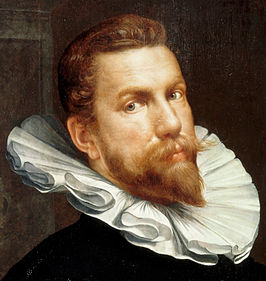Joachim Wttewael (1566-1638)
Wttewael Joachim (1566–1638)
 Wtewael was one of the leading Dutch exponents of Northern Mannerism. His highly distinctive, charmingly artificial style, which remained untouched by the naturalistic developments happening around him, was characterized by acidic colours and elegant figures in wilfully distorted poses. The best collection of his work, including a self-portrait (1601), is in the Centraal Museum, Utrecht.
Wtewael was one of the leading Dutch exponents of Northern Mannerism. His highly distinctive, charmingly artificial style, which remained untouched by the naturalistic developments happening around him, was characterized by acidic colours and elegant figures in wilfully distorted poses. The best collection of his work, including a self-portrait (1601), is in the Centraal Museum, Utrecht. Wtewael was most likely born in Utrecht, where, according to Carel van Mander, he began his career as a glass maker and glass engraver with his father. Pupil of painter Joos de Beer. Between 1588 and 1590 in Padua. c.1590-92 in France, working for Charles de Bourgneuf de Cucé, bishop of St. MaloIn 1586, he began six years of voyaging through France and Italy, in the company of the bishop of St. Malo, Charles de Bourgneuf de Cucé.
Returning to Utrecht in 1592 at the age of twenty-five, Wtewael joined the saddlemakers’ guild as a painter and began producing paintings, drawings, engravings, and stained glass. One of the last Mannerist painters, Wtewael stuck to the tradition even as most painters adopted the naturalistic style. .He was working in the designs for two windows in the church of St. Jan in Gouda between 1595-96.In 1596 he had a son Peter Wtewael, who became a painter as well. In 1610 mentioned on a list of members of the Utrecht citycouncil, supporting the Contra-Remonstrant revolt. He was one of the founding member of the Utrecht Guild of St. Luke in 1611 and elected member of the city council.
Master of Hendrick de Keyser, Peter van Winsen and Andries van Bochhoven. Father of the painter Peter Wtewael
There are no products matching the selection.






 Facebook
Facebook Twitter
Twitter Subscribe us
Subscribe us Flickr
Flickr




